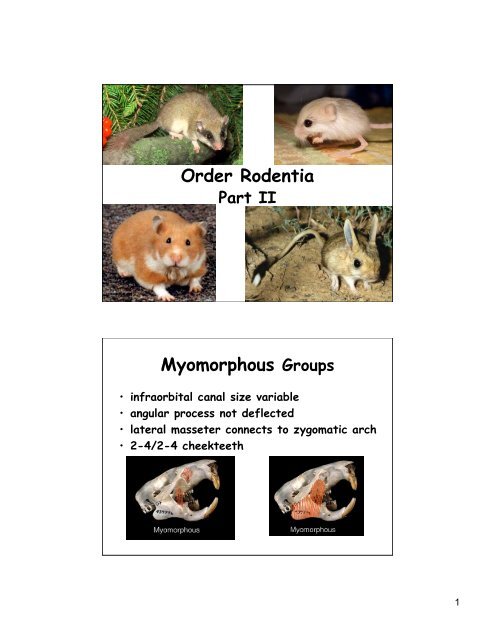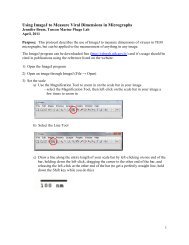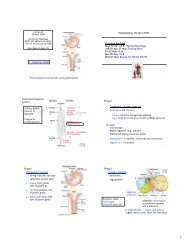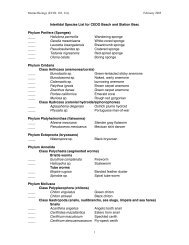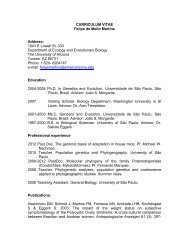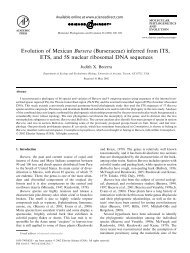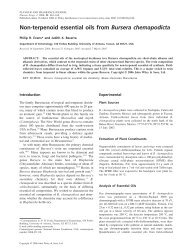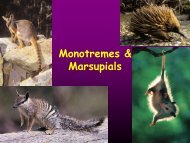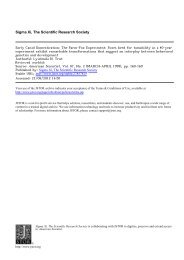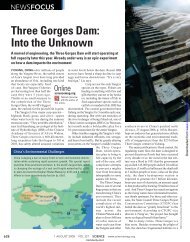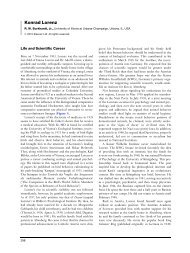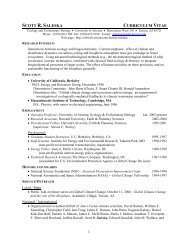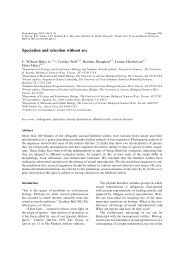Mammalogy Lab 16 Rodentia 2
Mammalogy Lab 16 Rodentia 2
Mammalogy Lab 16 Rodentia 2
Create successful ePaper yourself
Turn your PDF publications into a flip-book with our unique Google optimized e-Paper software.
Order <strong>Rodentia</strong><br />
Part II<br />
Myomorphous Groups<br />
• infraorbital canal size variable<br />
• angular process not deflected<br />
• lateral masseter connects to zygomatic arch<br />
• 2-4/2-4 cheekteeth<br />
medial masseter<br />
lateral masseter<br />
1
• short tail<br />
Geomyidae – Gophers<br />
• external cheek pouches<br />
• 2 pits between last upper molars<br />
• premolar 8-shaped, larger than molars<br />
• 4 cheekteeth<br />
Heteromyidae – Pocket Mice,<br />
Kangaroo Rats, etc.<br />
• long tail, may be tufted<br />
• long hindlimbs<br />
• external cheek pouches<br />
• inflated auditory bullae<br />
• 4 cheekteeth<br />
• cheekteeth crowns simple, 2-lobes<br />
2
• bushy tail<br />
Gliridae – Dormice<br />
• infraorbital canal maybe V-shaped<br />
• 4/4 cheekteeth<br />
• cheekteeth crowns low with transverse ridges<br />
Dipodidae – Jumping Mice & Jerboas<br />
*note that this family now includes Zapodidae<br />
• long tail<br />
• large oval infraorbital canal<br />
• 3-4 upper cheekteeth, 3 lower cheekteeth<br />
3
Cricetidae – New Wolrd Mice, Voles,<br />
Hamsters, Muskrats, and relatives<br />
• infraorbital canal V-shaped<br />
• 3 cheekteeth<br />
• cheekteeth crowns usually with 3 cusp rows<br />
Muridae – Old World Mice, Rats,<br />
Gerbils, and relatives<br />
• infraorbital canal V-shaped<br />
• 2-3 cheekteeth<br />
• cheekteeth crowns usually with 3 cusp rows<br />
4


